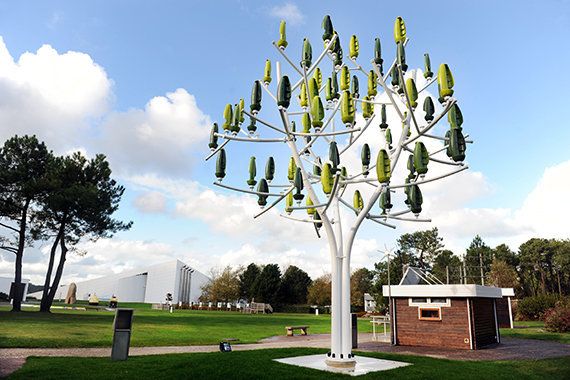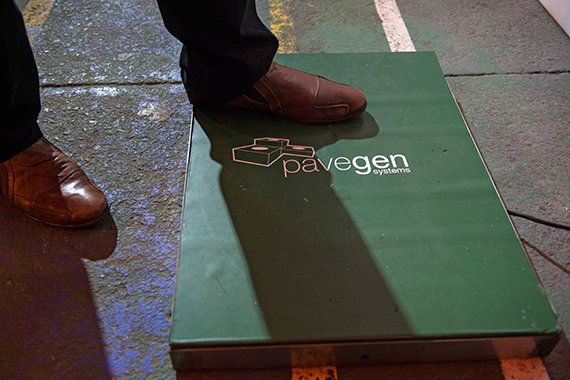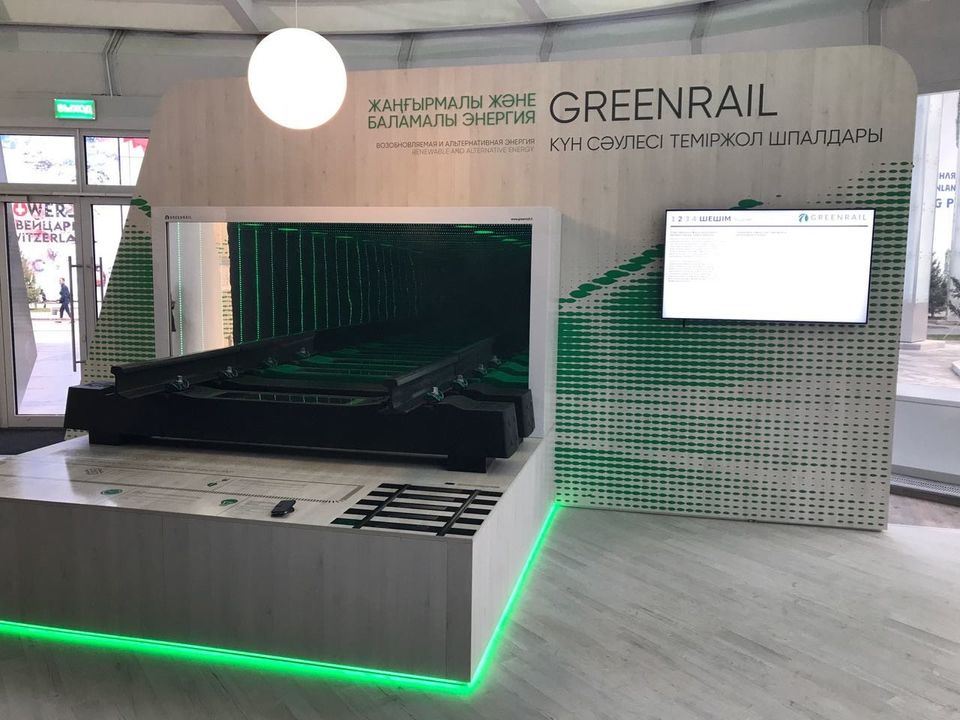Green businesses are booming and it’s not difficult to see why. Not only are governments offering tempting incentives, but consumers are increasingly conscious of, and drawn to, environmentally-friendly companies.
Then there’s the indisputable fact that this is where technology is heading in the long term – it has to be if we’re to survive. And as more companies go green, the technology becomes cheaper and more practical, making the economic case ever stronger. Here are six of the most exciting young businesses and start-ups seizing the moment and changing our world.
Wind power to the people

NewWind
Wind turbines are a familiar feature of landscapes and seascapes the world over. These huge structures require major investment to convert wind power into electricity, which is then channelled into the national grid. But up until now, attempting to harness wind energy on a smaller, more individual scale has been deemed impractical. Step forward NW (NewWind), a French company that uses ‘Aeroleaf’ technology to create the ‘Wind Tree’ – a wind turbine small enough to fit in your back garden.
The Aeroleaf is able to generate electricity even in a light breeze of 4-7mph, irrespective of wind direction, and it does so without creating any irritating noise. Depending on location and wind speeds, it can produce anything from 3,500kWh to 13,500kWh per year, which would be enough to supply a house with 80 percent of its energy consumption or run an electric car for 10,000 miles. Being French, it also happens to look rather stylish too, resembling a modern art sculpture.
The Aeroleaf is able to generate electricity even in a light breeze of 4-7mph, irrespective of wind direction, and it does so without creating any irritating noise. Depending on location and wind speeds, it can produce anything from 3,500kWh to 13,500kWh per year, which would be enough to supply a house with 80 percent of its energy consumption or run an electric car for 10,000 miles. Being French, it also happens to look rather stylish too, resembling a modern art sculpture.
Air of perfection

Green City Solutions
German company Green City Solutions has spent a lot of time thinking about how to improve urban air quality, a problem that continues to plague the world’s cities, with seven million people dying every year through air pollution according to the World Health Organisation.
Given that trees and plants are uniquely capable of absorbing pollutants, this became the starting point for GCS. They looked particularly at moss, certain strains of which are particularly good at neutralising pollutants like nitrous oxide and ozone into their own biomass. By combining this natural wonder with the latest technology, they’ve created the City Tree. Roughly the size of an advertising billboard, it’s a freestanding installation that can be placed in all kinds of city locations, and represents the equivalent of up to 275 trees, reducing pollution by 30 per cent within a 50-metre radius.
It also uses IoT (Internet of Things) technology to collect and analyse data about the air quality and condition of the City Tree itself. The company has put their idea to use in other circumstances too, including a ‘smog-eating music school’ in Kraków, Poland, where the roof is covered in their wonder moss.
Given that trees and plants are uniquely capable of absorbing pollutants, this became the starting point for GCS. They looked particularly at moss, certain strains of which are particularly good at neutralising pollutants like nitrous oxide and ozone into their own biomass. By combining this natural wonder with the latest technology, they’ve created the City Tree. Roughly the size of an advertising billboard, it’s a freestanding installation that can be placed in all kinds of city locations, and represents the equivalent of up to 275 trees, reducing pollution by 30 per cent within a 50-metre radius.
It also uses IoT (Internet of Things) technology to collect and analyse data about the air quality and condition of the City Tree itself. The company has put their idea to use in other circumstances too, including a ‘smog-eating music school’ in Kraków, Poland, where the roof is covered in their wonder moss.
Walk this way

Pavegen
Fitting in perfectly with the concept of the smart city, UK company Pavegen aims to turn our footfalls into energy. Think for a moment about the billions of times our feet hit the pavement in cities on any given day. What if some of that could be harnessed? And what if it could provide us with data that helps us change our behavioural patterns in a way that is environmentally beneficial?
With 150 installations in place around the world, Pavegen is already discovering the potential advantages to the environment. As people step on specially constructed tiles, their weight creates a rotary motion in an embedded generator to create electricity, which is then stored off grid. Each tile is also fitted with technology that relays real-time movement data, so the flow of foot traffic can be analysed and routes made more efficient, much as with motorised traffic. But there’s more: if you’re someone walking on the tiles, and therefore providing energy, in the future you will be able to connect via a phone app and earn ‘digital currency’, which can be used to offset your own energy costs. See, you always knew walking was good for both you and the environment.
With 150 installations in place around the world, Pavegen is already discovering the potential advantages to the environment. As people step on specially constructed tiles, their weight creates a rotary motion in an embedded generator to create electricity, which is then stored off grid. Each tile is also fitted with technology that relays real-time movement data, so the flow of foot traffic can be analysed and routes made more efficient, much as with motorised traffic. But there’s more: if you’re someone walking on the tiles, and therefore providing energy, in the future you will be able to connect via a phone app and earn ‘digital currency’, which can be used to offset your own energy costs. See, you always knew walking was good for both you and the environment.
Advertisement
Railing against the norm

Greenrail
Travelling by train has long been considered more environmentally friendly than by car. But Italian company Greenrail takes things a step further, focussing on the sleepers used in the construction of railway tracks. Traditionally these are made from pressed concrete and, in Europe alone, there are somewhere in the region of 350 million. They require constant maintenance, and every year millions have to be replaced entirely.
But Greenrail’s sleepers combine concrete with material from End of Life Tyres (ELTs) and recycled plastic, making them longer lasting and far more durable. They’ve also made it possible to integrate a small solar panel, as well as a kinetic energy system, which generates electricity from the pressure of trains passing overhead. Now patented in 148 countries, the Greenrail sleeper is set to be a truly world-changing green technology.
But Greenrail’s sleepers combine concrete with material from End of Life Tyres (ELTs) and recycled plastic, making them longer lasting and far more durable. They’ve also made it possible to integrate a small solar panel, as well as a kinetic energy system, which generates electricity from the pressure of trains passing overhead. Now patented in 148 countries, the Greenrail sleeper is set to be a truly world-changing green technology.
The home front

Smappee
The battle to make our lives more sustainable starts at home, and with their ingenious energy monitors, Belgian company Smappee is leading the way. With rising energy costs, smart meters are catching on, but Smappee’s gizmos go one step further, using technology that integrates into the IoT.
Its energy monitor is fitted to the fuse box and then communicates with an app on your phone or other device, giving you real-time information on usage and cost, as well as utilising graphs to show long-term and peak usage, allowing for a better understanding of your consumption habits. Combined with their plugs, you also have the ability to turn appliances on and off remotely via the app. Smappee’s gas and water monitors work in the same way, with the additional bonus of alerting you to any leaks in the system. Ultimately, you could be looking at a reduction of energy costs by 30 percent.
Its energy monitor is fitted to the fuse box and then communicates with an app on your phone or other device, giving you real-time information on usage and cost, as well as utilising graphs to show long-term and peak usage, allowing for a better understanding of your consumption habits. Combined with their plugs, you also have the ability to turn appliances on and off remotely via the app. Smappee’s gas and water monitors work in the same way, with the additional bonus of alerting you to any leaks in the system. Ultimately, you could be looking at a reduction of energy costs by 30 percent.